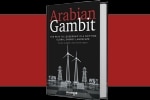Executive summary
Under the right conditions, district cooling can offer numerous advantages over conventional cooling in the Gulf Cooperation Council (GCC).1 The technology has inherent advantages for areas of high cooling density — densely populated areas with a heavy demand for air-conditioning. By pooling the demand for cold air in dense urban areas, district cooling is more cost efficient over the long term than conventional cooling options at the individual building level. District cooling is also more reliable, more energy efficient, and has less negative environmental impact than standard approaches to air-conditioning. With the GCC countries likely to grow rapidly and urbanize further in coming decades, district cooling could save these countries from investing substantial sums on new power stations.
However, current market structures make it difficult to recognize and capitalize on those benefits. In many cases, power prices are overly low, making district systems appear viable only at very high levels of cooling density. Market distortions make conventional air-cooling technologies appear more competitive. Property developers often fail to appreciate the advantages of combining their cooling demand and are wary of the technology because district cooling requires significant initial investment. The region’s district cooling sector has also done itself no favors through its frequent poor planning of cooling loads and its inconsistent cost recovery models.
Governments can remove these obstacles by treating district cooling as a utility. They should designate appropriate zones of sufficient density for district cooling and include the technology in urban planning. Governments should also regulate tariffs to ensure fairness for cooling providers, property developers, and the end-consumers. In addition, governments need to set service standards and define technical codes for the operation of district cooling. Governments can also get involved in providing district cooling as they do with other utilities. With resolute government intervention, district cooling can achieve its potential as a cost-effective and sustainable way to cope with the region’s hot climate.
Key highlights
- District cooling offers significant advantages in cost, environmental protection, comfort, and operational efficiency over other cooling technologies when used in sufficiently dense areas.
- Properly employed, district cooling could provide around 30 percent of the GCC’s forecast cooling needs by 2030. This would prevent the region from having to build 20 gigawatts in new electricity-generating capacity, and save 200,000 barrels of oil equivalent per day in fuel.
- For district cooling to achieve its full potential, GCC governments must employ utilities-style regulation to address structural issues that bias the market against district cooling.
Conclusion
District cooling offers significant benefits to the GCC as it plans for an increasingly urban future. The technology provides environmental protection, comfort, operational efficiency, and cost advantages over other cooling methods. However, governments must take purposeful action to reap the rewards of district cooling. The long-term potential capacity and fuel savings alone justify government intervention to prevent this important technology from staying on the sidelines as GCC economies grow over the next two decades. By treating district cooling as the utility it is, incorporating district cooling into urban planning, and perhaps taking an active role in its provision, governments can allow this promising technology to play its part in the development of the GCC.
1 The GCC consists of Bahrain, Kuwait, Oman, Qatar, Saudi Arabia, and the United Arab Emirates..
Contact us


















Menu